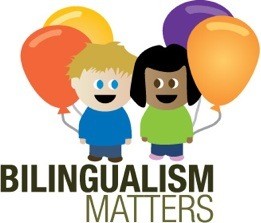Patricia Kuhl is a professor at the University of Washington. Her research primarily focuses on early language and brain development.
This video of Patricia Kuhl is very informative and interesting. She explains some of her findings on how early babies learn one language over another. In her studies she found that babies use “statistics” on sounds they hear. She also explain how she uses brain scans that examines babies’ brains.
There is a critical period on language acquisition of a new language. There is a picture of a graph in the video that shows that skill at acquiring a new language decrease consistently after the age of 7 years. The critical period or optimal period of learning a new language is before 7 years old. Anytime after that period language acquisition are usually significantly more difficult. This graph can be seen at 1:30 in the video. If parents want their children to be bilingual or multilingual it is best if they expose them to the languages at a younger age.
The first critical period in development is the period where babies master which sound is used in their language. For example, the English “l” and “r” sound is rarely used in Japanese. All babies from all over the world can discriminate all sounds of any language while adults can only discriminate only sounds of their own language and not of other language. Hence, Patricia Kuhl calls adults “culture bound listeners” while babies are “citizens of the world”. For this reason, it is more difficult for an adult to learn new language because they are only able to discriminate sounds of the language they already know.
A study on American and Japanese babies show that there is a critical 2 month period around 8 to 10 months babies. At 6-8 months both American and Japanese babies have similar score on performance on English sounds but when they are 10-12 months the American babies perform better and the Japanese babies perform worse. This graph can be seen at 3:10 in the video. Patricia Kuhl claims that babies are listening intently to sounds while taking “statistics” on the sounds of the language they hear. They will then use these statistics of sounds as a model to learn a language.
A follow up study shows that bilingual babies, who are exposed to 2 languages, keep 2 sets of statistics at once and can differentiate between them. The study tested Taiwanese and American babies on mandarin sounds and found similar results as in the previous study. They had similar score at 6-8 months but the Taiwanese babies perform better than American babies at 10-12 months. However when they had American babies exposed to mandarin they performed just as well as Taiwanese babies in the mandarin sound test at 10-12 months. This graph can be seen at 7:35 in the video. This proves that babies are learning sounds rapidly at this critical period. Parents should expose their children consistently to different languages at this critical period around 8-10 months so the children can learn languages at more ease.
In the end she introduces the magnetoencephalograph (MEG). It is a new machine that allows provides the ability to examine babies’ brains while they are learning. It is a safe, non-evasive and silent machine so it is ideal as using it to track a baby’s brain. This new technology opens up the possibility of future research direction for early language and brain development.
